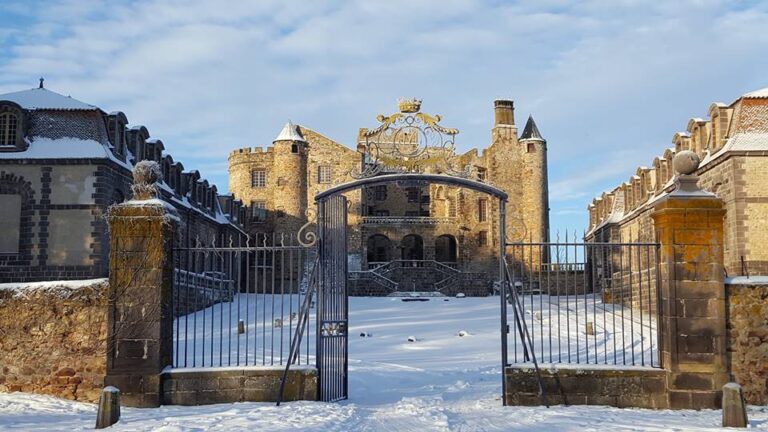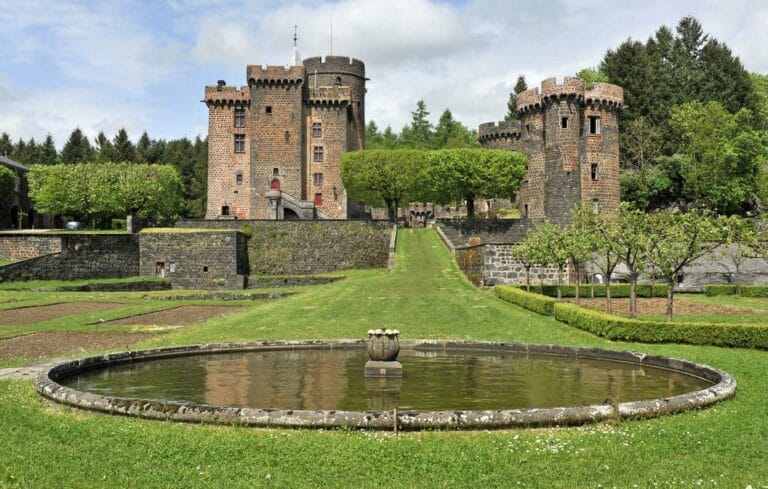Château de Chouvigny: A Historic Castle in France
Visitor Information
Google Rating: 4.2
Popularity: Low
Google Maps: View on Google Maps
Official Website: www.chouvigny.net
Country: France
Civilization: Medieval European
Remains: Military
History
The Château de Chouvigny is located in the commune of Chouvigny in modern-day France. The site was originally established around 1250 by Guillaume I of Chauvigny. Its foundations may have been laid upon an earlier Gallo-Roman military camp known as Calviniacum, a name believed to have influenced the later designation of Chouvigny.
Throughout the 13th century, the castle served as the ancestral residence of the Chauvigny family. This lineage evolved through marriage into the Chauvigny de Blot branch. Ownership changed hands in the early 15th century when the Montmorin family acquired the estate by marriage, signaling a continuation of its role as a noble seat through dynastic unions.
In 1543, the estate passed to the La Fayette family following the marriage of Françoise de Montmorin to Jean Motier de La Fayette, lord of Hautefeuille. The castle remained under La Fayette ownership into the 17th century, notably during the lifetime of François de La Fayette, Jean Motier’s great-grandson. It was during this period that Madame de La Fayette, an important literary figure, took up residence there.
The château’s purpose shifted during the Second Empire when it was owned by the duc de Morny and repurposed as a hunting lodge. In the early 1930s, engineer Jean-Louis Rufenacht and his wife Madeleine acquired the property with plans to transform it into guest accommodations. However, these plans were abandoned due to the extensive renovations required and the broader historical circumstances of the time.
Following a phase of neglect, the castle underwent restoration mid-20th century and again in the 1960s under the guidance of a medieval history and architecture enthusiast. Though privately owned today, the château has retained its historical significance through preservation efforts.
Remains
Perched on a rocky outcrop approximately 80 meters above the Sioule valley, the Château de Chouvigny commands a strategic position where the valley’s gorges open out. The castle is situated roughly 300 meters southeast of the village of Chouvigny, with its entrance accessible via the road traversing the valley behind it. Its design follows the principles of medieval military architecture.
Central to the castle’s structure is a cylindrical donjon, or keep, dating to the 13th century. This tower was constructed to protect the lordly living quarters arranged in a linear formation nearby. The military function of the fortress is highlighted by a cavalry courtyard and a watchtower equipped with fish-tail shaped arrow slits, specialized openings designed for archers to defend the castle effectively.
Though the surrounding high plateaus appear to overlook the château, natural indentations create separation on both sides, offering enough distance to shield the fortress from the spread of medieval artillery with its limited range. This terrain feature contributed to the defensive viability of the site throughout its active use.
Visitors to the castle can find several notable elements: an oratory, which would have served as a private chapel or place of worship for the lords; the main lordly residence containing a collection of medieval arms and armor; a hall of honor; and structures referred to as the treasure tower and watchtower. Additionally, terraces provide extensive views over the Sioule valley, emphasizing the castle’s commanding position within the landscape.
Although the Château de Chouvigny has not been officially designated as a monument historique by the French Ministry of Culture, its preserved architectural features offer clear insight into its historic military and residential functions.






